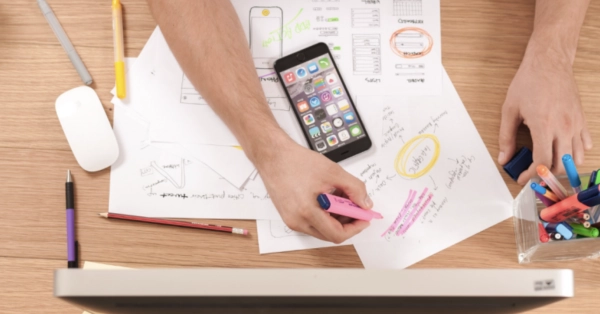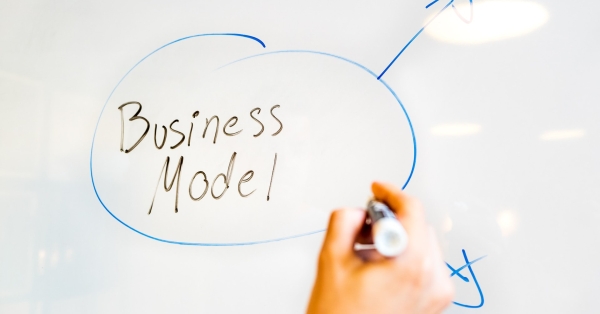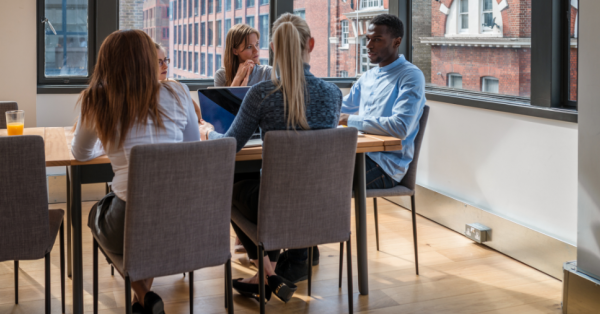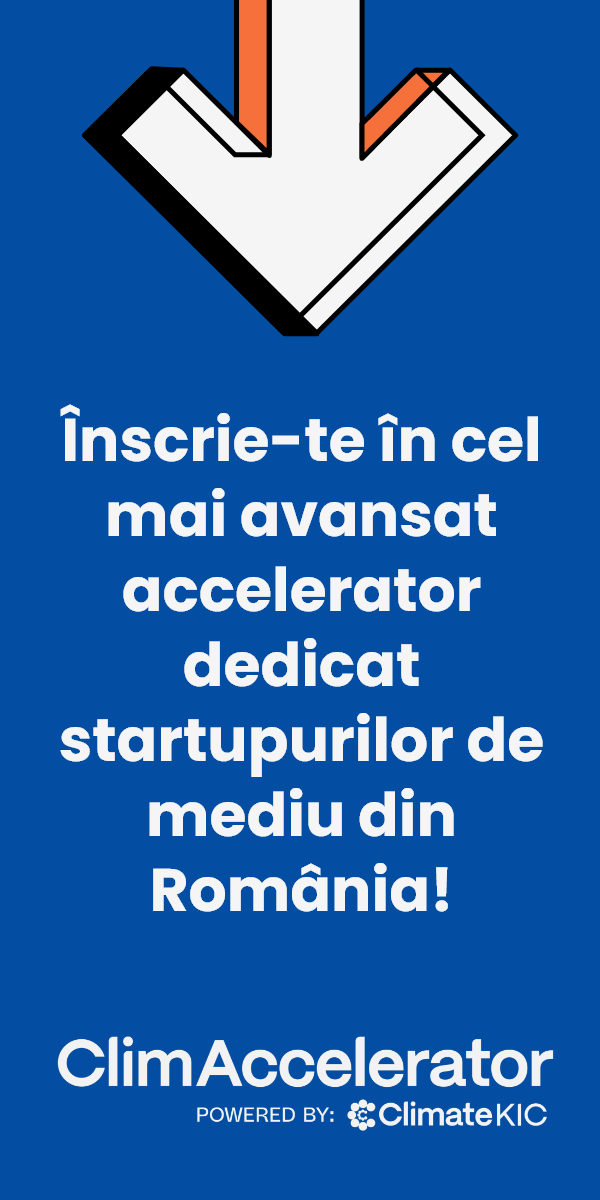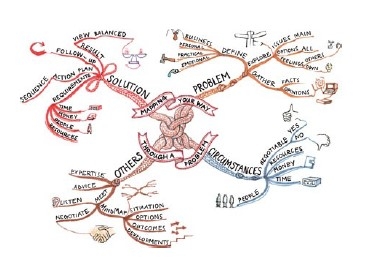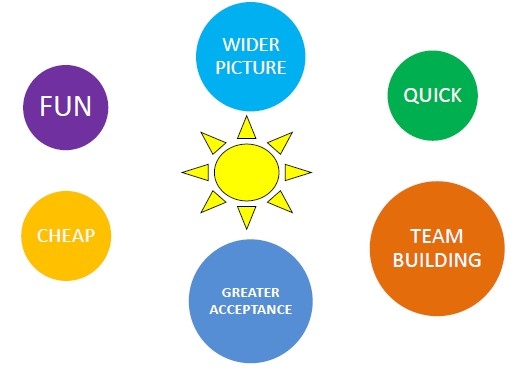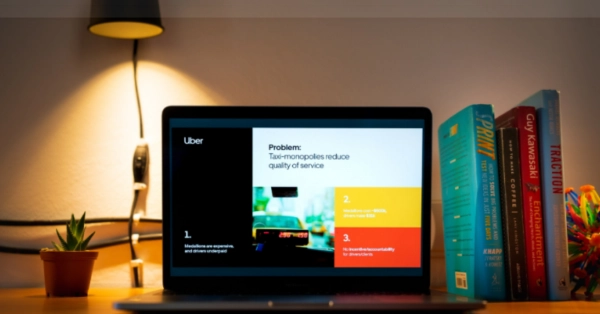The creative process can be easily enhanced and improved through some simple but very effective strategies and tools, including mind mapping and brainstorming.

Think of a city map and you will get a clear idea of what a mind map is. The city in the centre represents the main key idea, issue or problem and the main thought/s in your thinking process, while the main roads irradiating from there represent your secondary thoughts. Special images or shapes can represent points of interest or particularly interesting ideas.
A Mind map is one of the most straightforward creative and effective means to literally “map out” your thoughts that is to put information into your brain and to take information out of your brain.
All Mind Maps use colours and have a natural structure that radiates from the centre by using lines, symbols, words and images according to a set of simple, basic, natural and brain-friendly rules. They allow you to turn a long list of boring information into a colourful, memorable, highly organised diagram that works in line with your brain’s natural way of doing things.
Just like a road map, a mind map will:
- give an overview of a large subject or area
- enable you to plan routes or to make choices, and will let you know where you are going and where you have been
- gather together large amounts of data in one place
- encourage problem solving by allowing you to see new creative pathways
- be enjoyable to look at, read, muse over and memorize
Rather than using traditional note-taking techniques, you can use mind maps as route-maps for the memory, to organise facts and thoughts.
To sum up, mind maps can help you to:
- be more creative
- save time
- solve problems
- concentrate
- organize and clarify your thinking
- remember better
- see the ‘whole picture’
- plan
- communicate
Worksheet
Mind map
Brainstorming is a typical tool particularly effective to generate ideas, think up solutions, concepts, ideas in problem solving. In other words, using the brain to storm new ideas in groups.
In fact, it works in a group of people who create free associations to the topic given in a relaxed and friendly atmosphere implying deferred judgements to release as many ideas as possible.
Therefore, the key rules are:
- relaxed atmosphere - completely free
- no criticism or judgements (at this point, there are no bad ideas)
- quantity matters
- all ideas legitimate
- all ideas put on the sheet of paper
- evaluation only after the session
Key benefits
How to organise a session | Key stages
1. Preparation
- Specify the problem (what do we really want?)
- Select the right people
- Decide when and where
- Invite people
2. Conduct the session
- Specify the objectives and make sure that everybody is happy with the central question.
- Decide the roles (leader, recorder, panel)
- Explain the rules (or make sure that everybody knows them)
- Begin by going around, after some rounds, open the floor.
- Record the ideas exactly, clarify only in the end.
- Eliminate judgement
- Encourage the ideas, even the most radical and far-fetched (allow a natural rythm, do not hurry)
- At the end, eliminate duplicates, clarify, thank the participants.
3. Evaluation
- Put the evaluation off / next day
- Add newly born ideas to the list
- Group similar ideas together
- Select the best or most interesting suggestions
- Create teams which will work on them further
- Inform people about the results
You may also conduct individual brainstorming exercises for instance when you need to solve some problem alone, and you do not have a group to work with and use a piece of paper (can be big and colourful to stimulate your thinking), jot down all ideas linked with the issue avoiding self-judgement.


